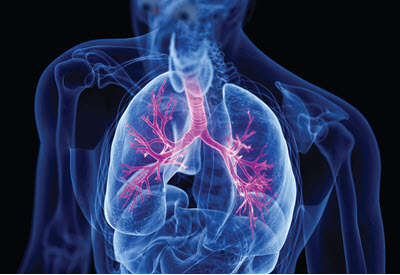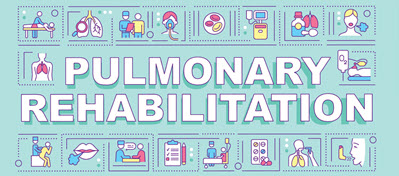Pulmonology Coding Alert
Realize the Accurate Costs of PR Sessions for Your Practice
Learn how PR and CR reimbursement rates compare. Healthcare clinicians offer pulmonary rehabilitation (PR) to help provide their patients with relief from their symptoms, build exercise tolerance, and boost the patients’ overall quality of life. However, the Centers for Medicare & Medicaid Services (CMS) average a reimbursement rate well below what a PR session typically costs a practice. So, here’s how you can evaluate your practice’s expenses to build accurate charges for PR sessions. Background: The Pulmonary Rehabilitation (PR) Reimbursement Toolkit is a document geared toward helping pulmonology practices calculate the total cost for their PR services. According to the toolkit’s contributors, “[The toolkit] is essential for financial stability and equity that PR charges reflect the complexity of PR services as well as both billable and unbillable costs of comprehensive PR.” Revitalize Your PR Coding Knowledge PR also can help reduce the use and costs of healthcare over time. “Looking at healthcare utilization and expenditures is a little more difficult often times to quantify, but we got some data out there saying it’s happening, and we know this is a good thing for our patients,” said Debbie Koehl, MS, RRT-NPS, AE-C, FAARC, manager of PR and PFT at IU Health in Indianapolis, Indiana in a March 2023 American Association for Respiratory Care (AARC) webinar. The CPT® code set features two codes designated for PR: You’ll assign one of these codes if your pulmonologist performs PR on a patient with chronic obstructive pulmonary disease (COPD) or COVID-19. These codes were added to the code set on Jan. 1, 2022, and replaced temporary code, G0424 (Pulmonary rehabilitation, including exercise (includes monitoring), one hour, per session, up to two sessions per day), which pulmonology practices billed Medicare for PR services provided to beneficiaries with moderate, severe, and very severe COPD. The key phrase in these two code descriptors is “continuous oximetry monitoring.” You’ll report 94625 if the pulmonologist continuously monitors the patient’s oxygen levels via a finger, ear, forehead, or other oximeter throughout the PR session. However, you’ll assign 94626 if the provider captures oximeter levels intermittently during the session. Diagnosis coding: You’ll need to include an appropriate diagnosis code to reflect the need for PR to correctly report 94625-94626 for patients with COPD. The ICD-10-CM codes that apply for 94625-94626 include: The pulmonologist’s documentation needs to also include pulmonary function tests (PFTs) to verify the diagnosis code listed above. The documentation needs to show the patient is Global Initiative for Chronic Obstructive Lung Disease (GOLD) Stage II or greater when determining their COPD severity, as well. The GOLD program report contains guidelines for staging COPD in patients. A provider determines a patient is Stage II COPD when the FEV1 value is < 80 percent and the FEV1/FVC value is ≤ 70 percent (https://goldcopd.org/2023-gold-report-2/). COVID PR reporting: You’ll follow different rules when a pulmonologist administers PR to a patient recovering from COVID-19. In these encounters, “you do not have to have a PFT. In fact, you don’t even have to have a positive COVID-19 test. And you don’t have to be in the hospital. All the patient has to have is a clinical note that says they have persistent symptoms that include respiratory dysfunction for at least four weeks after COVID-19,” Koehl said. You’ll report two ICD-10-CM codes for COVID-19 to be covered under 94625-94626. The first code will reflect the condition or symptoms related to the COVID-19 infection, such as: The second code will be the U09.9 (Post COVID-19 condition, unspecified). Remember: Rehabilitation Services Aren’t Reimbursed Equally Aside from the word, “rehabilitation,” PR and cardiac rehabilitation (CR) services are not equal. Each service differs in the amount of work provided by the clinician, as well as the reimbursement rates. “Medicare has told us that they see clear similarities between cardiac and pulmonary rehab. They’re not identical, but they’re more similar to each other than they are to anything else. However, the payment for pulmonary rehab is inadequate compared to cardiac rehab,” said Chris Garvey, FNP, MSN, MPA, MAACVPR, nurse practitioner at University of California San Francisco (UCSF) Health during a Sept. 1, 2022, American Association of Cardiovascular and Pulmonary Rehabilitation (AACVPR) webinar. Typical PR payments are less than 50 percent of CR. For example, CR services like 93797 (Physician or other qualified health care professional services for outpatient cardiac rehabilitation; without continuous ECG monitoring (per session)) have an average Medicare payment rate of $120.07, whereas 94625-94626 have average Medicare payment rates of $57.48, each. While the PR reimbursement rate may be significantly lower than CR sessions, revenue cycle experts encourage you to determine precise charges for your practice’s PR services. Itemize Your PR Charges Taking the time to calculate your practice’s actual costs of performing PR sessions could improve your practice’s payments in the future. “Importantly, this should include all pulmonary rehab services, supplies, and equipment to establish an appropriate charge for pulmonary rehab and to help navigate this Medicare puzzle,” Garvey said. In addition to the bundled services rendered by the healthcare provider, PR sessions may also require additional costs to the practice. If you calculate those costs, you’ll find out what your practice should be charging for PR sessions. “Make that list, look for those charges, get your current chargemaster involved, and add up all those charges that you’re going to do. You’ll be surprised as to what it actually costs,” Koehl adds. Simply put — while the current reimbursement rates may be lower than the actual charges, reimbursement rates may improve in the future if CMS has record of accurate PR charges on Medicare cost reports. Resource: The AACVPR, AARC, American Thoracic Society (ATS), and the American College of Chest Physicians published an updated Pulmonary Rehabilitation (PR) Reimbursement Toolkit in 2022 (www.aarc.org/an22-aarc-joins-others-in-bringing-new-pulmonary-rehabilitation-reimbursement-toolkit-to-rts-everywhere/).

Related Articles
Pulmonology Coding Alert
- Reimbursement:
Realize the Accurate Costs of PR Sessions for Your Practice
Learn how PR and CR reimbursement rates compare. Healthcare clinicians offer pulmonary rehabilitation (PR) to [...] - Coding Quiz:
Put Your Postprocedural Respiratory Complication Coding Skills to the Test
Know how to report a cancelled procedure. Patients can develop several respiratory complications because of [...] - Modifiers:
Decipher Cigna’s New Modifier 25 Payment Process
Prepare for a restrictive claims submission process. Cigna has proposed updating their payer policies for [...] - You Be the Coder:
Uncover the Code Needed for a Graphite Fibrosis Dx
Question: A 75-year-old new patient came into our pulmonology office complaining of a harsh dry cough, [...] - Coding Quiz Answers:
Did You Ace Our Postprocedural Respiratory Complication Coding Quiz?
Were you able to identify the right VAP code? Think you really know your postprocedural [...] - Reader Questions:
Use SDOH Codes When a Patient Doesn’t Fill a Script
Question: During a recent follow-up appointment with an established patient, the patient explained they didn’t get [...] - Reader Questions:
Identify the Difference Between J70.2 and J70.4
Question: I have a report where the provider diagnosed the patient with immunotherapy-induced pneumonitis. The record [...]



